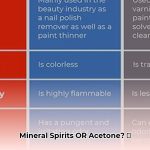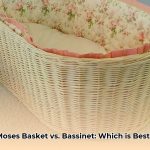Elevate your garden with the majestic height and stylish structure of tall trellises. These versatile structures not only provide crucial support for climbing plants but also add an element of vertical beauty, transforming any outdoor space into a vibrant, flourishing oasis. Whether you’re envisioning a wall of fragrant jasmine, a shady walkway draped in honeysuckle, or a secluded nook bursting with color, this guide offers everything you need to know about choosing, installing, and maximizing the benefits of tall garden trellises.
Choosing the Perfect Trellis: A Step-by-Step Guide
Selecting the right trellis can feel overwhelming, but with a little guidance, you can find the perfect fit for your garden. Consider these key factors:
1. Size and Scale
First, assess your available space and the desired height of your plants. Trellises range from a modest 6 feet to towering structures over 9 feet tall. A smaller clematis might be content with a shorter trellis, while a vigorous bougainvillea will likely require a more substantial support. Measuring your vertical space is crucial to avoid a cramped, chaotic look.
2. Material Matters
Next, consider the material. Each option offers distinct advantages and requires specific care:
- Wood: Offers a natural look that blends seamlessly with garden settings. However, wood requires regular painting or staining every 1-2 years to protect it from rot and the elements.
- Metal (Steel): Known for its strength and durability, metal comes in various designs. However, steel can rust and may get hot in direct sunlight, potentially impacting your plants. Applying a rust-resistant coating and monitoring for rust are essential.
- Aluminum: Lightweight, rust-resistant, and low-maintenance, aluminum is a durable choice. While it can be more expensive, the minimal upkeep makes it a worthwhile investment. Occasional cleaning is usually sufficient.
| Material | Pros | Cons | Maintenance |
|---|---|---|---|
| Wood | Natural look, blends well with gardens | Can rot, requires regular painting/staining | Paint or stain every 1-2 years, check for rot |
| Metal (Steel) | Strong, durable, various designs available | Can rust, can get hot in direct sunlight | Apply rust-resistant coating, monitor for rust |
| Aluminum | Lightweight, rust-resistant, low maintenance | Can be more expensive than other options | Occasional cleaning |
3. Placement & Plant Compatibility
Consider sunlight, wind exposure, and your plant’s mature size when choosing a location. Some plants thrive in full sun, while others prefer partial shade. Ensuring proper sunlight and protection from strong winds is essential for healthy growth. A tall trellis can lean against a wall, stand freely, or form an archway. Imagine a wall adorned with fragrant jasmine or a romantic walkway covered in vibrant honeysuckle.
Speaking of plants, research the specific needs of your chosen climbers. Ivy, bougainvillea, clematis, and roses are just a few examples that thrive on trellises. Do you own a loft bed? A tent for your loft bed can create a magical world—perhaps reminiscent of a secret garden hideaway. Don’t forget the added benefit of attracting pollinators and creating a haven for wildlife.
Trellis Sizing: Finding the Right Fit
Choosing the right trellis height is crucial. A trellis that’s too short can restrict plant growth, while one that’s too tall can make maintenance difficult.
General Guidelines
- Average Height: A 6-foot trellis is generally suitable for most climbing plants, providing adequate support while remaining accessible for pruning and harvesting.
- Smaller Plants: For compact climbers like cucumbers and peas, a 3-4 foot trellis is often sufficient.
- Vigorous Climbers: Indeterminate tomatoes, pole beans, and other vigorous growers typically require a taller support of at least 5-6 feet.
- Overhead Structures: If you’re planning a pergola or archway, aim for a height of 7 feet or more to allow ample headroom and cascading growth.
Plant-Specific Considerations
Research your chosen plants’ mature size and growth habits. Some climbing roses can easily reach 10 feet or more, requiring a taller trellis or alternative support. For smaller plants, a shorter trellis is ideal. Ongoing research suggests that providing appropriate support, including the correct trellis height, can significantly impact plant health and yield.
Trellis Alternatives: Exploring Creative Options
Beyond traditional trellises, several creative alternatives can support your climbing plants:
- Obelisks: Elegant, pointed structures ideal for roses, clematis, and honeysuckle.
- Archways: Create stunning entrances or walkway coverings, adding a touch of romance to your garden.
- Repurposed Ladders: A rustic and charming option for supporting beans, peas, and cucumbers.
- PVC Pipes: Versatile and affordable, allowing you to build custom trellises in various shapes and sizes.
| Alternative | Material Options | Best for… | Style |
|---|---|---|---|
| Obelisk | Wood, Metal, Plastic | Roses, Clematis, Honeysuckle | Formal, Elegant |
| Archway | Wood, Metal, Plastic | Creating entrances, Walkway coverings | Romantic, Grand |
| Ladder | Wood, Metal, Bamboo | Beans, Peas, Cucumbers | Rustic, Vintage |
| PVC Pipe | PVC | Customizable for various plants | Practical, DIY |
While these suggestions offer a starting point, feel free to experiment and discover what works best in your garden. Ongoing research suggests that the type of support can influence plant growth, so explore different options and observe your plants’ responses.
Lattice vs. Trellis: Understanding the Difference
While often used interchangeably, lattices and trellises serve distinct purposes:
-
Lattice: Primarily decorative, offering privacy and visual appeal. Lattices are typically flat panels with crisscrossing patterns and are often used for fence coverings, wall decor, or gazebo accents. While some lightweight climbers may grow on them, it’s not their primary function.
-
Trellis: Designed for plant support, providing a sturdy framework for climbing plants to twine and grow. Trellises come in various forms, from freestanding structures to wall-mounted options, and can also offer privacy once plants mature.
| Feature | Lattice | Trellis |
|---|---|---|
| Main Purpose | Decoration, Privacy | Plant Support |
| Structure | Flat, crisscross pattern | Open framework |
| Typical Use | Fence covering, wall decor, gazebo accent | Supporting climbers, privacy screens |
Some gardeners even combine lattices and trellises, using a trellis for support and adding lattice panels for a decorative touch. The possibilities are endless!
Maintaining Your Trellis: Ensuring Long-Lasting Beauty
Regular maintenance will keep your trellis looking its best. Clean your trellis regularly, apply a fresh coat of paint or stain to wooden trellises as needed, and tighten any loose screws or bolts. Proper care will ensure your trellis stands tall and proud for years to come.
Where to Buy Tall Garden Trellises
You can find a wide selection of tall garden trellises at various retailers, including:
- Lowe’s: Offers a range of heights and styles, including the Style Selections 108-inch trellis.
- Home Depot: Another excellent source for various trellis options.
- Wayfair: Features a diverse selection, including arched and lattice designs, with fast and free shipping over $35.
- Etsy: Find unique, handcrafted trellises, often made from metal and aluminum.
- Amazon: Offers a vast selection from various brands at competitive prices.
- Blain’s Farm & Fleet: Carries a selection of trellises, often with discounts and sales.
- Kohl’s: May offer seasonal selections of trellises.
By following these guidelines and exploring the wide variety of options available, you can choose the perfect tall garden trellis to enhance your outdoor space and create a thriving vertical garden.









